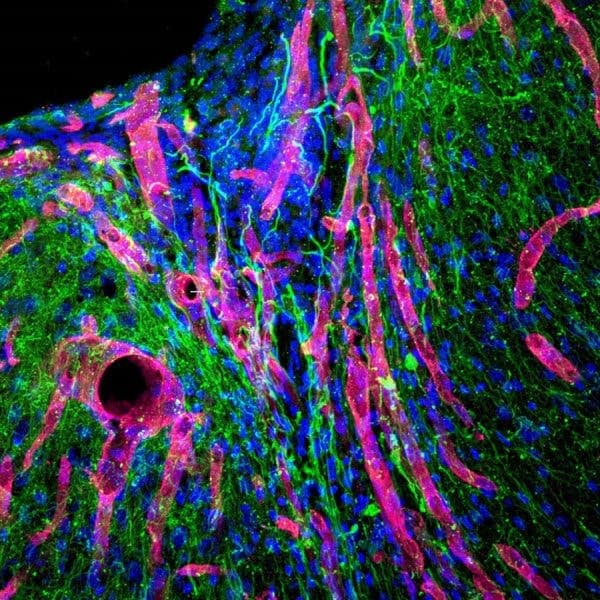Researchers from the University of California – Los Angeles (UCLA) have developed a gel that helped stroke-damaged brains of rats heal.

Image credits UCLA Health.
Brains have a limited capacity for recovery after damage or disease. They don’t regrow blood vessels, can’t construct synapses or larger tissue structures anew. Which is bad news because we use our brains for a lot of things. In recognition of this fact, a team of UCLA researchers has been hard at work developing a way to coax our brains into regenerating, just like your skin would after a scratch.
The gel they developed has proven itself on stroke-damaged brains of mice models — a world first — potentially paving the way for human medical applications.
“We tested this in laboratory mice to determine if it would repair the brain in a model of stroke, and lead to recovery,” said Dr. Thomas Carmichael, paper co-author.
“This study indicated that new brain tissue can be regenerated in what was previously just an inactive brain scar after stroke.”
When the brain’s tissues are damaged, such as what happens in the case of a stroke, they don’t heal back. Instead, they go through a process reminiscent of scar formation: the dead tissue is gobbled up, absorbed by the brain. This results in a cavity without any blood vessels or neurons.
The team, led by Dr. Tatiana Segura, a former Professor of Chemical and Biomolecular Engineering at UCLA, developed the gel to coax the surrounding, healthy brain tissue into healing the injured area. The material contains molecules that stimulate blood vessel growth and anti-inflammatory compounds (inflammation results in actual scars and impedes regrowth of functional tissue). The gel hardens to about the same degree as brain tissue and is meant to provide a scaffolding for the brain to regenerate on.
To test the compound, Segura and her team injected the gel into stroke cavities in the brains of mice. After 16 days, the cavities contained regenerated brain tissue, including neural networks the team reports. The mice with new neurons showed improved motor behavior, though exactly why this happened isn’t yet clear.
“The new axons could actually be working,” said Segura. “Or the new tissue could be improving the performance of the surrounding, unharmed brain tissue.”
The gel was ultimately broken down and absorbed by the body, leaving behind only bran-new brain tissue.
The team hopes their work will pave the way for recovery in cases of acute stroke, or the period immediately after such an event — that period, they add, is five days for mice and two months for humans. In the future, the team also plans to explore whether their gel can be used to treat mice long after the stroke injury.
The paper “Dual-function injectable angiogenic biomaterial for the repair of brain tissue following stroke” has been published in the journal Nature Materials.






